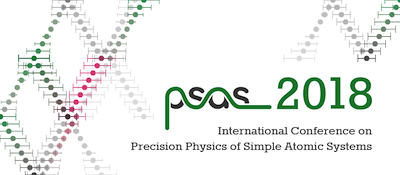Conveners
Hadrons: Fr3
- Johann Zmeskal (Austrian Academy of Sciences (AT))
The BESIII experiment at BEPCII accumulated the world's largest $e^+e^-$ collision samples at 3.773 and 4.178 GeV. We have studied the purely leptonic decays $D^+_{(s) }\to l^+v$, and the semi-leptonic decays of $D^0\to K(\pi)^-e^+v_e$, $K(\pi)^-\mu^+v_\mu$, $D^+\to\bar K^0(\pi^0)e^+v_e$, $\bar K^0(\pi^0)\mu^+v_\mu$ and $D_s^+\to K^{(*)0}e^+v_e$. We will report the improved measurements of the...
After a short review of the overall physics program of BESIII and the key features of the BEPCII collider and BESIII detector, I will present some of the recent highlights of the charmonium(-like) spectroscopy program of BESIII. The results include measurements of radiative and hadronic decays of several charmonium(-like) states below and above the open-charm production threshold. The ultimate...
The construction of the low-energy $e^+e^-$ collider ($\mu\mu$tron)
operating near the muon-pair production threshold begins in 2018 at
BINP (Novosibirsk). The collider parameters and configuration
(a luminosity of $8\times 10^{31}$ cm$^{-2}$c$^{-1}$), an center-of-mass
energy spread of 400 keV, and beams collision with a large crossing angle)
allow to perform experiments on study of dimuonium...
Spherical neutral detector (SND) is an experiment for $e^{+}e^{-}$ annihilation study at moderate energies 0.2-2 GeV. The light quark anti-quark bound states are main subject of study at these energies. The quark anti-quark states express themselves as resonances in the e+e- ->hadronic cross sections. The hadronic cross sections could be recalculated to hadronic vacuum polarization (HVP). The...

